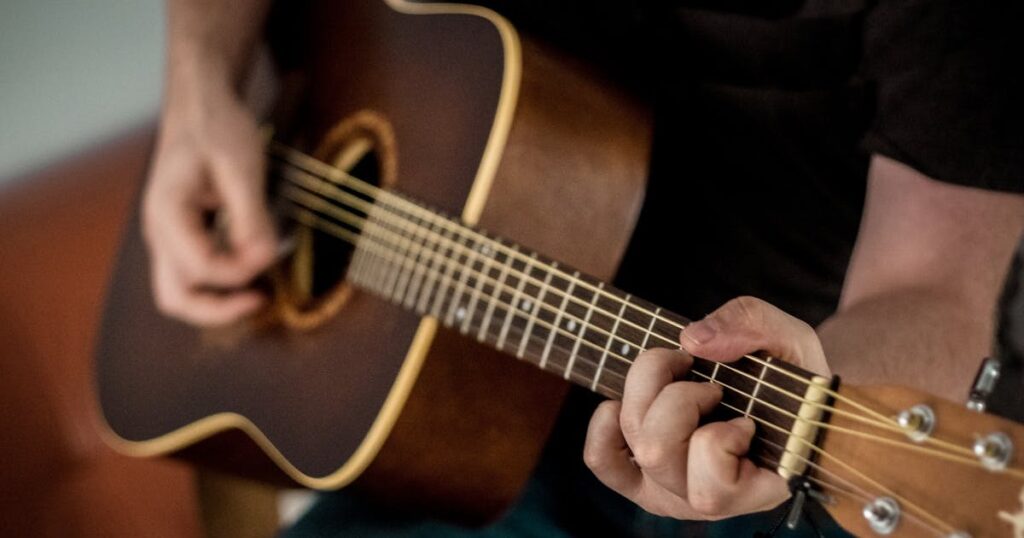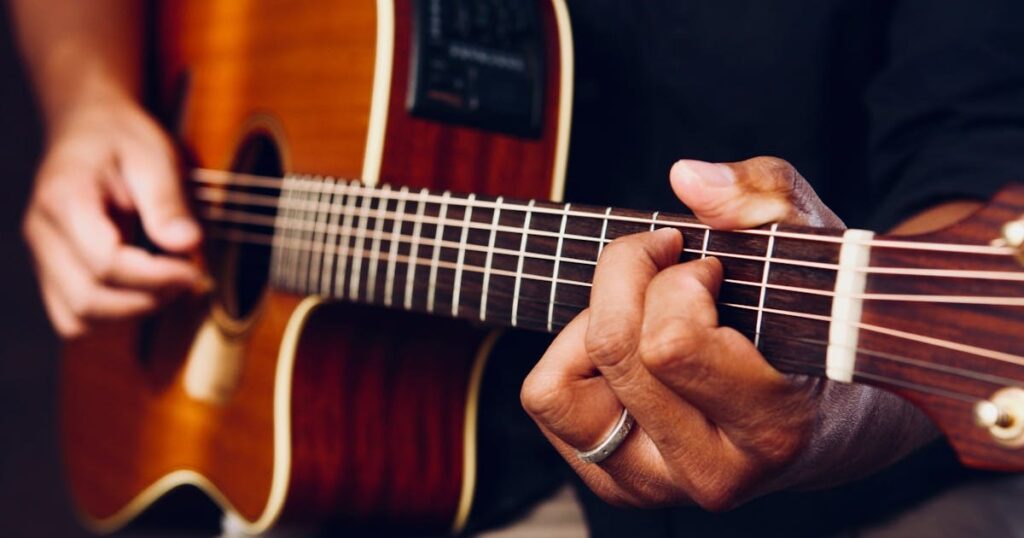Key Takeaway: Master the essential, simplified steps of EQ’ing an acoustic guitar to enhance its sound, focusing on trimming excess frequencies, controlling bass, cleaning the tone, and effectively blending it with other instruments for a balanced mix.
Welcome, aspiring musicians! In this article, we will be discussing the basic steps on how to properly EQ an acoustic guitar. Whether you’re a local resident looking to improve your skills, a cultural enthusiast wanting to learn about new music techniques or even just someone who loves listening to podcasts featuring acoustic guitars, this guide is for you.

But first, let’s define what EQ’ing means. Equalization (or “EQ” for short) is the process of adjusting the frequency balance in an audio signal. It aims to enhance certain frequencies and reduce others in order to achieve a more balanced and pleasing sound.
Now that we have that covered, let’s dive into the four quick steps to EQ’ing an acoustic guitar.
The Four Quick Steps to Acoustic Guitar EQ’ing
EQ’ing an acoustic guitar may seem like a daunting task, but fear not. With these four simple steps, you’ll be able to achieve a well-balanced and natural sound in no time.
Step 1: Trim the Excess
The first step is to identify which frequencies are causing problems. Using your EQ plugin or physical equalizer, boost all frequency bands while playing the guitar. Listen carefully and lower any frequencies that sound harsh, muddy, or unpleasant.
These are referred to as “problem frequencies” and should be reduced by a few decibels. Keep in mind that excessive boosting can also cause problems, so be sure to make subtle adjustments.
Step 2: Control the Guitar’s Bottom-End
The low-end frequencies (around 200 Hz and below) are important to control when EQ’ing an acoustic guitar. Too much low-end can make the guitar sound boring and overpower other instruments in the mix.
To fix this, reduce the low-end frequencies by a few decibels until it sounds balanced with the rest of the mix.
Step 3: Clean it Up and Make it Good
Once you have trimmed the excess and controlled the bottom end, it’s time to clean up any remaining problem frequencies. Use a narrow Q (bandwidth) and sweep through the frequency spectrum to identify any harsh or muddy sounds. Reduce these frequencies until they sound more natural and balanced.
You can also boost certain frequencies to enhance the guitar’s tone. For example, boosting around 1 kHz can add clarity and presence to the guitar, while boosting around 10 kHz can add brightness and airiness.
Step 4: Mixing the Guitar with Other Instruments (Cross-Mixing)
Lastly, it’s important to consider how the acoustic guitar fits in with other instruments in a mix. This is known as cross-mixing. If you’re mixing a full band, make sure that the acoustic guitar doesn’t compete with other instruments for space in the frequency spectrum. You can achieve this by using EQ to carve out a specific range for each instrument.

It’s also important to make sure that the guitar doesn’t clash with other instruments’ frequencies. For example, if the piano is playing a prominent melody in the same frequency range as the acoustic guitar, try using EQ to reduce one of their frequencies to avoid muddiness and create more clarity in the mix.
Frequently Asked Questions
How do I know which frequencies to boost or reduce?
It’s best to use your ears and experiment with different frequency ranges. However, a general guide is that lower frequencies (below 200 Hz) tend to sound boomy, while higher frequencies (above 2 kHz) can become harsh or sibilant.
Can I EQ an acoustic guitar during recording or only in post-production?
You can do both. If you have the option, it’s best to EQ during recording because it helps achieve a more balanced sound from the start. However, if you don’t have access to an equalizer during recording, you can always EQ in post-production.
Is it necessary to EQ an acoustic guitar?
It’s not necessary, but it can greatly enhance the sound of the guitar and help it fit better in a mix with other instruments.
Conclusion
EQ’ing an acoustic guitar may take some practice, but with these four quick steps, you’ll be able to achieve a well-balanced and natural sound.
Remember to always use your ears and make subtle adjustments for the best results. Don’t be afraid to experiment and have fun with EQ’ing your acoustic guitar!
